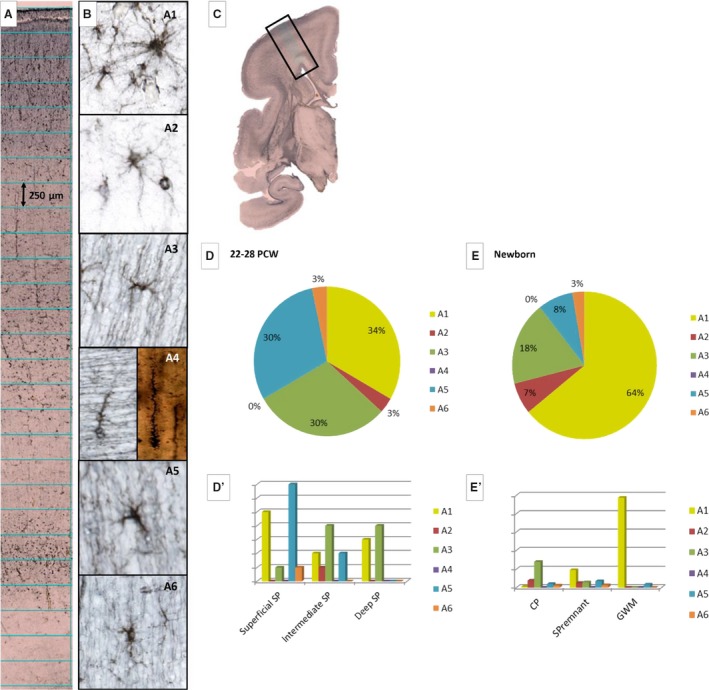Figure 9.

Glial type classification used for semiquantitative analysis (B: A1–A6). The most numerous cells are fibrous‐like astrocytes with long radiating processes (B: A1) and their number increases significantly during late fetal development (compare D and E). Different transient types of astrocytes are shown as A3 and A5 (B). The most ambiguous population is the one containing immature protoplasmic astrocytes (B: A2). Actual squares (height 250 μm) used for quantification of laminar distribution are marked on a vertical probe, as an example of the method used. In extremely premature brains (22–28 postconceptional weeks – PCW), transient types of glia are more numerous (B: A3) than in newborns (compare D and E) because they become more mature astrocytes later. The number of GFAP‐reacted transforming radial glia (B: A4) is significantly lower compared with the Stensaas modification using the Del Rio‐Hortega Golgi method, probably due to incomplete ‘staining’ of cell processes. The transient type of glia (B: A5) is more numerous at 22–28 PCW compared with the newborn period. Note the dramatic increase of astrocytes in gyral white matter (GWM) and subplate (SP) remnant (E′). Rectangle on (C) corresponds to the position of enlarged image (A).
